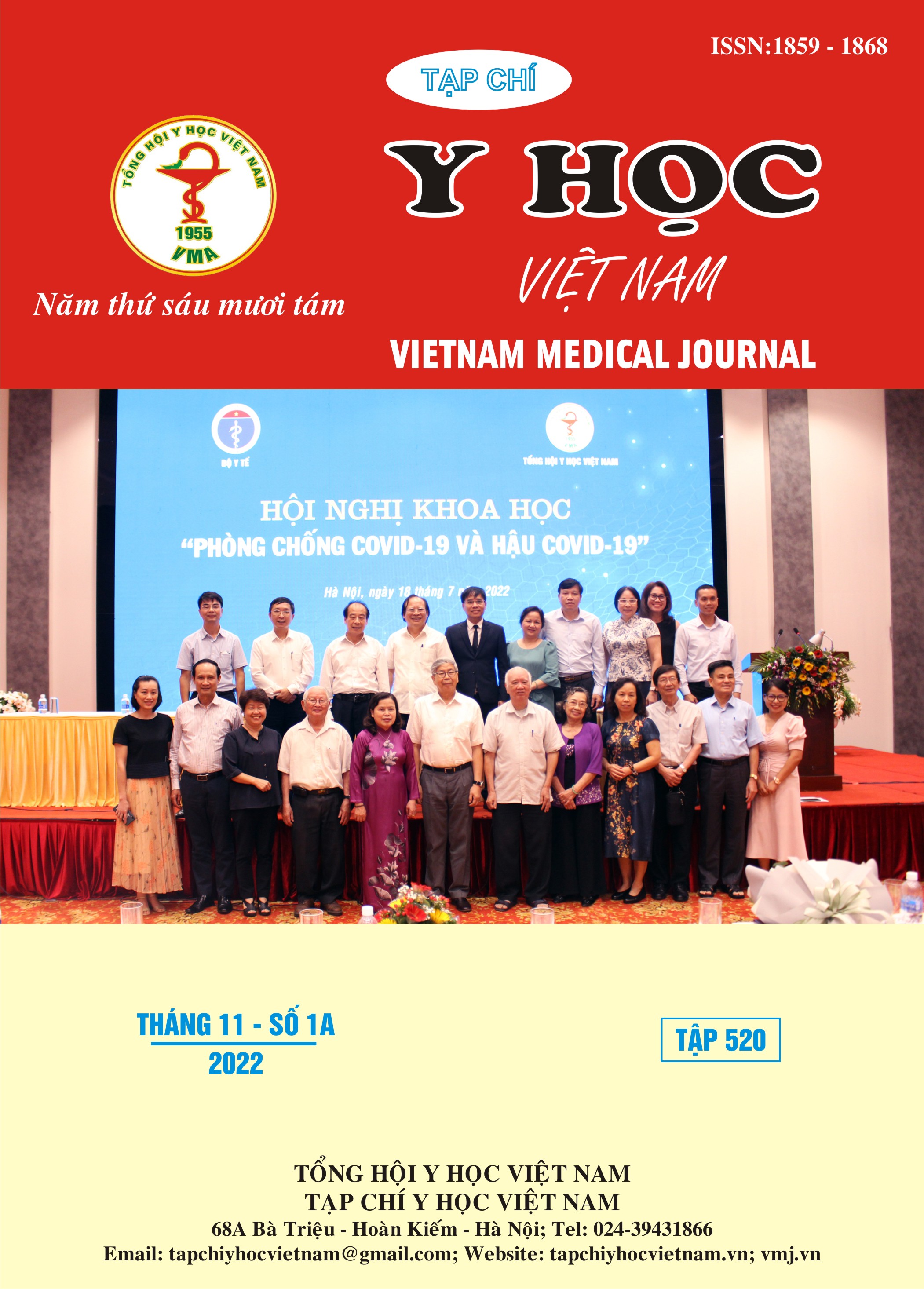ASSESSMENT OF PAIN AND RELATED FACTORS AFTER MINIMALLY INVASIVE SURGERY TLIF AT ORTHOPEDIC AND SPINE DEPARTMENT OF BACH MAI HOSPITAL
Main Article Content
Abstract
Objectives: Describe the level of pain after MIS TLIF surgery and some related factors. Material and Methods: A cross-sectional descriptive study on 25 patients after MIS TLIF surgery at the Orthopedic and Spine Department of Bach Mai Hospital from March 2021 to September 2021. Results: After 24 hours of surgery, the mean back and leg VAS were 4.96 ± 0.84 and 2.88 ± 1.45, respectively. In which, the majority of patients had moderate pain in the back and leg (18 and 15/25 patients), only 1 patient had severe pain in the back, and 3 patients without pain in the leg. No patient had the worst pain. 100% of patients used NSAIDs and 91.7% of patients used paracetamol. At discharge, the patient’s back and leg VAS decreased to 1.96 ± 0.74 and 1.4 ± 1.03 respectively; statistically significantly lower than before surgery (p<0.001). There was no statistically significant relationship between the level of pain after surgery with age (r=0.1, p=0.3), gender, surgery time, and the number of pain killers used (p>0.05). Conclusion: Immediately after surgery, patients had pain at the incision then the pain gradually decreased until discharge.
Article Details
Keywords
MIS TLIF, level of pain, postoperative pain
References
2. Postoperative pain experience: results from a national survey suggest postoperative pain continues to be undermanaged. Apfelbaum J.L., Chen C., Mehta S.S. và cộng sự. 2, s.l. : Anesth Analg, 2003, Vol. 97. 534-540.
3. Pain, IASP Announces Revised Definition of International Association for the Study of Pain (IASP). [Online] 2020. [Cited: 09 12, 2021.] .
4. Information point: Visual Analogue Scale (VAS). Crichton, N. s.l. : J Clin Nurs, 2001, Vol. 10. 697–706.
5. Hoàng Gia Du, Nguyễn Văn Trung, Vũ Xuân Phước. Kết quả điều trị trượt đốt sống thắt lưng L4L5 bằng phẫu thuật lấy đĩa đệm, cố định cột sống và ghép xương liên thân đốt. https://osdbachmai.com/dieu-tri-truot-dot-song-that-lung-l4l5/. [Online] 2020. https://osdbachmai.com/dieu-tri-truot-dot-song-that-lung-l4l5/.
6. Minimally Invasive Transforaminal Lumbar Interbody Fusion (TLIF): Technical Feasibility and Initial. Schwender J.D., Holly L.T., Rouben D.P. S1, s.l.: Clin Spine Surg, 2005, Vol. 18.
7. Vũ, Nguyễn. Nghiên cứu điều trị TĐS thắt lưng bằng phương pháp cố định cột sống qua cuống kết hợp hàn xương liên thân đốt. [book auth.] Trường Đại Học Hà Nội. Luận án tiến sĩ y học. 2016.
8. Associations between early postoperative pain outcome measures and late functional outcomes in patients after knee arthroplasty. Raspopović E.D., Meissner W., Zaslansky R. và cộng sự. 7, s.l. : PLOS ONE, 2021, Vol. 16. e0253147.
9. Postoperative pain: frequency and management characterization. García-Ramírez P.E., González-Rodríguez S.G., Soto-Acevedo F. và cộng sự. 2, s.l. : Colomb J Anesthesiol, 2018, Vol. 46.
10. The magnitude and associated factors of post-operative pain at Debre Tabor compressive specialized hospital, Debre Tabor Ethiopia, 2018. Tiruneh A., Tamire T., và Kibret S. s.l. : SAGE Open Med, 2021, Vol. 9. 20503121211014730–20503121211014730.
11. Risk Factors and Level of Acute Post-Operative Pain in Surgical Patients During the First 48 Hours after Surgery. Lee Y., Son J., và Yoon H. 3, s.l.: J Korean Biol Nurs Sci, 2014, Vol. 16. 226-234.


